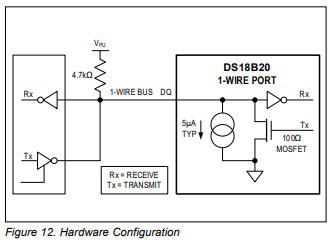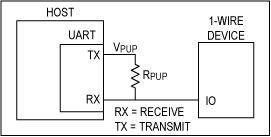Hello,
I am trying to understand how to use the Zephyr 1-wire driver on nrf52840. I see from the "scanner" sample of the w1-serial driver that it supports the nrf52840DK, however, the sample readme does not provide a description of the hardware connections required. As I understand, this driver uses the UART module, and I understand the Tx and Rx pins have to be shorted by a 470k resistor or a Schottky diode, before it can be connected to a 1-wire device such as Dallas DS28E05 EEPROM.
Could you please confirm that this is required to be done? Also, would it be possible to have a simple workaround by assigning the Tx and Rx to the same pin in a DTS overlay? This would avoid the need for hardware modifications.
My ultimate aim is to get the w1-serial driver working on a custom board that a customer has provided, on which the DS28E05 is already wired to a GPIO pin (P0.5) of nrf52840. Previously, on the old bare-metal application software, there was a bit-banging driver that was used for this communication. My job is to port the old software to Zephyr, and I would like to use the proper Zephyr driver for this. Changing the hardware is not an option for me, as this board is already in production. If the only way to use the w1-serial driver is to wire up the Tx and Rx as above, I guess I would be forced to write a new Zephyr-compatibe version of the old bit-banging driver.
Thanks
regards
pnc




